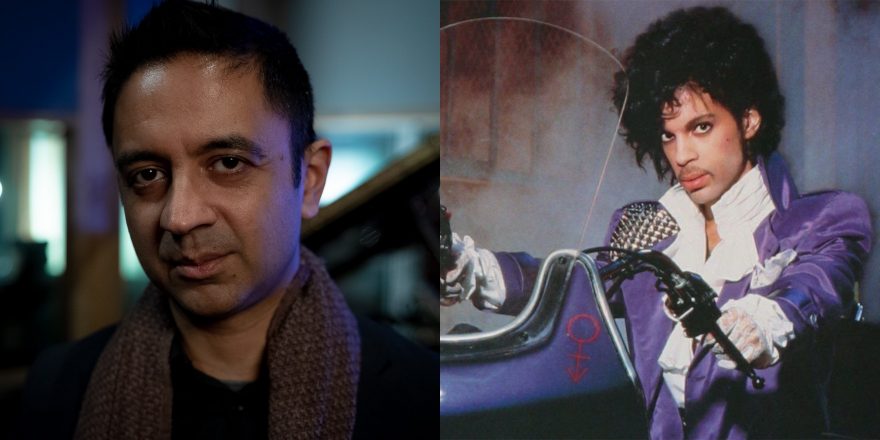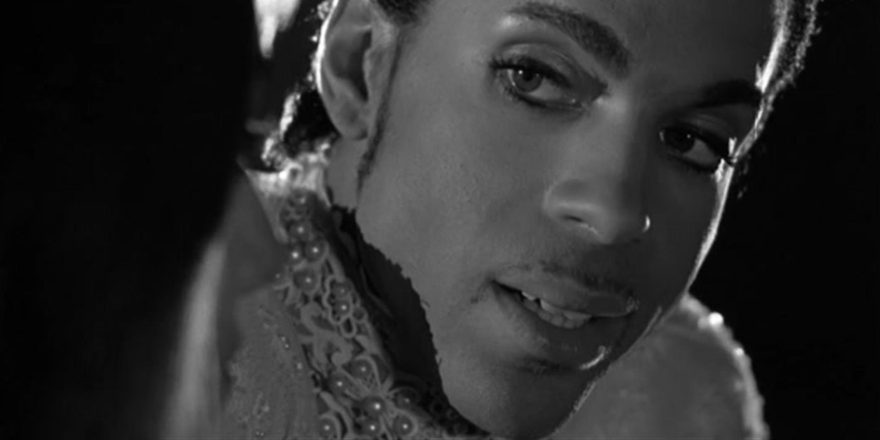When Purple Rain came out in spring ‘84, it wasn’t the first I’d heard of Prince — I certainly heard the songs “1999” and “Little Red Corvette” on the radio all the time. But I remember there was a girl who lived two doors down from me who had “When Doves Cry” on repeat all day while she was shooting baskets in her front yard. I heard it through my open window, and it caught my ear. There was something so weird about it — it didn’t seem organized like most songs you’d hear on the radio.
The way it starts is with this pretty bizarre, distorted guitar riff that I couldn’t parse. It just sort of tumbles forth and spills out of the speakers, and you don’t know where it’s starting or ending. It took me a while to make sense of it. And then those weird drums come in underneath. There’s no bassline, just all those weird drum sounds — the kind of knocking wood sound, and all this jagged rhythm. It surged and ebbed. It sounds like the song is sort of talking to you, though I couldn’t tell what it was saying. The way the harmonies stacked with no bass, and the way he sang across it — all the background vocals felt like the same voice. It was very mysterious to me, and at 12 to be struck with that level of mystery was uncanny. I think it was just what I needed to challenge my sense of what I thought music was.
Then I started digging into everything of his I could find. I would go to the library and check out LPs and tape them on cassette — it was what in the CD era we called “ripping,” but I think we just called it “dubbing” then. I would listen to those cassettes over and over again. And as I was dubbing them, I would copy the album artwork on the cassette case, so I have pencil versions of all the 1999 artwork that I made. I was really focused on trying to figure this shit out.
Certainly I was super into the music, and I really admired the musicianship as someone who was trying to play music — I had been studying violin, and playing piano by ear, for most of my life, so I was picking out what he was doing on the piano and trying to do it too. Then I also had a pair of drumsticks, so I tried to play some of the drumming and figure out what the drums were doing. I learned that he was someone who played all the instruments — a lot of his music was just him doing everything. That appealed to me that he had that level of knowledge about everything.
And it wasn’t just knowledge: He had a vibe. He had a vibe as a bass player and he had a vibe as a drummer. The first time I noticed this was on 1999. There’s a track called “Lady Cab Driver,” and the way that the drums are played on that song really struck me. I remember trying to play some of what he was doing on the couch with my drumsticks. There’s something unusual about it, sort of like Stevie Wonder — when you listen to some of Stevie Wonder’s music from the ‘70s, he’s playing all the instruments including the drums, and the drums have this weird swagger to them. It’s not normal drumming; there’s something elemental about them that grabs you. Prince has that when he plays drums. The song “Tambourine” from Around the World in a Day is another example of this.
In 2009 and 2012 when I put out different Trio albums that included covers — it was about not just covering the songs, but actually making an experience out of it that had its own drive and its own shape. I realized in retrospect that some of that was about Prince, even though it was a totally different format, and you wouldn’t necessarily connect the dots if you listened to it. But it was something about how he would shape a track. I think the album 1999 is, for me, the gold standard for this, but Sign ‘O’ the Times has this quality as well. There are songs that go on and on, and they’re usually built off of some drum machine loop that starts in the beginning and never stops. Then all these other instruments come in and arrive at a certain point; it just builds and builds until it breaks down to just rhythm guitar or drums.
This was made as dance music, so it was sort of about creating an experience that works on the dance floor. It’s a very different sense of time, of temporality than just making a piece of music to listen to and contemplate. It’s meant for you to inhabit with your body in a certain way, and experience physically. There would be the radio edit that would be three-and-a-half minutes, but then when you heard the nine minute version on the LP, there was all kinds of other shit going on — episode after episode of different exchanges or vocalists. Or maybe there’d be some sexual escapade where it sounds like someone’s having an orgasm, and that would be accompanied by a guitar solo. Even then, the way he paced things, I learned something about composition from him.
There’s something about the pacing and managing of an extended musical experience that he was a genius at. There’s the whole songwriting piece, and then the instrumental virtuosity he had, and then him as a performer. He’s clearly one of the greatest performers of all time. I remember seeing him live at this outdoor amphitheater in California in the late ‘90s, and I was on the back of the lawn — way out there, like a half mile away — but it still felt like he was singing to me. He was reaching me in my heart and my gut; he grabs you by the lapels no matter who you are and no matter where you are. It’s astonishing.
To me, one of the great mysteries of being an artist is that you make something because you’re in it, but you also have to have a sense of what it is for someone who’s not in it with you — what does it feel like for someone who just walked in off the street and doesn’t know you, who you are or what you have to offer? How do you win them over in the course of this amount of time? That’s one of the many things he was a master at. I’ve realized over the years how deeply that imprinted itself on me, that kind of awareness of experience, of time, and music, and life.
That he asserted himself into the pop sphere — hardly anyone else was able to do that at the time besides him and Michael Jackson. Hardly any other Black artists were able to crossover in that way. I’ve come to realize, actually, that quite a few people who share my background as a South Asian American, or South Asians in the diaspora, have a thing for Prince. There was something Prince was able to speak to, being a kind of ambiguous figure. I mean, he was very much a Black man from Minneapolis, and he made music that was very much from that place. But somehow he also was able to cultivate a certain mystique — “I’m not a woman, I’m not a man, I am something that you’ll never understand.” He was this kind of liminal, in-between figure, and I think ethnically and in terms of sexuality he was able to kind of show up as “other” because of what he looked like and what he wore and what his hair looked like. I think that allowed a lot of us to project our fantasies onto him. Like, Maybe I could be like that!
As told to Annie Fell.
(Photo Credit: Craig Marsden)







